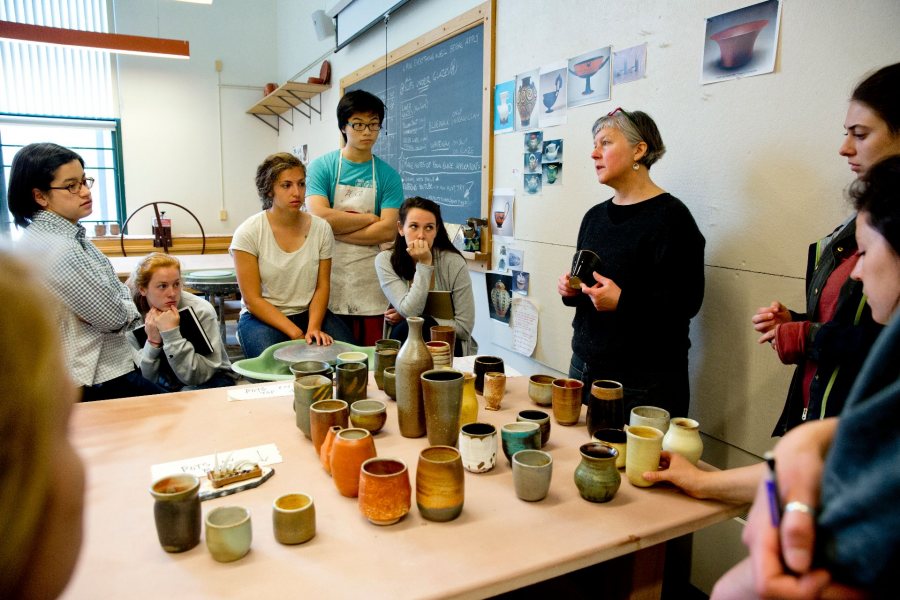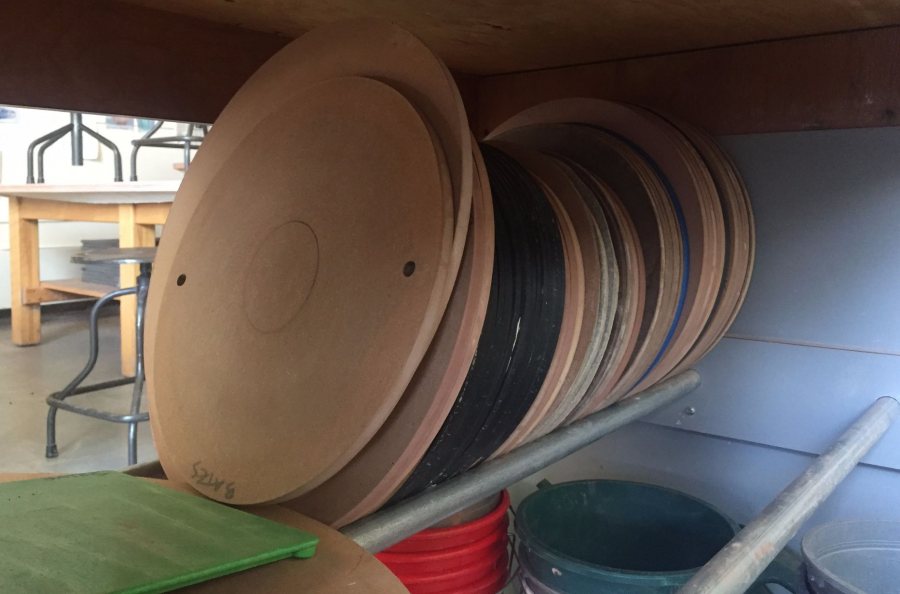
For most of us, a bat sleeps upside down in caves or attics. Or, a bat hits home runs.
For Susan Dewsnap, a lecturer in art and visual culture, bats help ceramics like bowls or plates keep their shape.
“The term derives from ‘batten,’ as in, ‘to batten down the hatches’ or hold something secure,” Dewsnap, who has exhibited her ceramics in the U.S. and internationally, says.

Lecturer in art and visual culture Susan Dewsnap teaches a Short Term course in 2015 on soda firing. (Phyllis Graber Jensen/Bates College)
Bats are flat objects, usually circular, made of wood, plaster, or plastic. They can be attached to a pottery wheel, and ceramics are created, or thrown, on top of them.
“Bats enable a potter to throw a form on the pottery wheel, and when completed, to remove the pot, while still attached to the bat, without touching the wet work,” Dewsnap says.
The bat is essentially a support, good for creating wide, shallow pieces like plates, which could be deformed if a potter tried to pick them up with her hands. By lifting the piece by the bat, the potter keeps the piece pristine.

A rack of Bates’ bats sits in an Olin Arts Center studio, awaiting their ceramicists. (Emily McConville/Bates College)
Bats are also useful for making larger pieces, Dewsnap says.
“When making large round jars, I will actually use two bats: one to throw the bottom half of the pot and one to throw the top half,” she says. “After allowing the two sections to set up, the top half, still secured to the bat, is flipped upside down and attached to the bottom half, resulting in a larger form, which is then returned to the wheel, still attached to the bottom bat, for further shaping.”




